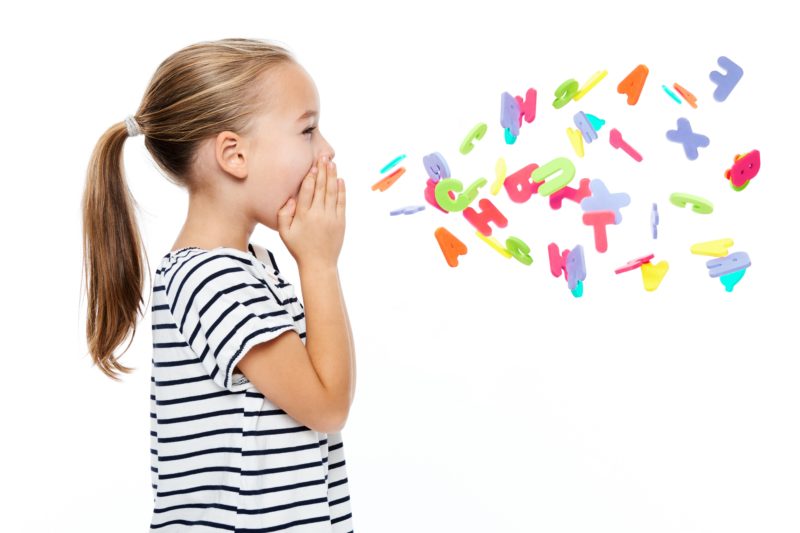Children grow and develop at their own pace. While some might start to walk and talk earlier than expected, others might be delayed. Without the ability to communicate clearly with others, they can become frustrated and can start falling behind in a number of areas, including play, social skills, and early literacy. This is why it is so important that any delays are identified and managed as early as possible, avoiding a ‘wait and see’ approach. Research has shown time and again that the early detection and treatment of speech and language difficulties leads to better outcomes than if intervention starts later in life. This is because children’s brains are more flexible and receptive to learning language skills at a younger age. Knowing this, the importance of us monitoring the development of our children’s speech and language milestones should be clear
Take some time to look through the following age-appropriate speech and language milestones to check where your little one is at.
By 12 months, children should…
- Understand about 10 words
- Respond to their name
- Recognise greetings and gestures, e.g. hi/bye
- Recognise a few familiar people and objects
- Make eye contact
- Start to imitate and use a mix of sounds (e.g. ‘da-da’), gestures, and some common words
By 18 months, children should…
- Understand up to 50 words and some short phrases
- Follow simple, one-step instructions (e.g. ‘pick up the ball’)
- Point to familiar objects when named
- Point to some pictures in familiar books
- Say 6-20 single words, somewhat intelligibly
- Copy lots of words and noises
- Name a few body parts
- Use objects in pretend play (e.g. pretending to cook with kitchen toys)
By 2 years, children should…
- Follow simple 2-part instructions (e.g. ‘pick up the ball and the truck’)
- Respond to simple ‘what’ and ‘where’ questions
- Point to several body parts and pictures in books when named
- Understand prepositions ‘in’ and ‘on’
- Say more than 50 words
- Put 2 words together (e.g. ‘ball gone’)
- Change their tone of voice to ask a question (e.g. ‘car go?’)
- Say ‘no’ to refuse things
- Use most vowel sounds and the following consonants: m, n, p, b, k, g, h, w, t, d
- Start to use mine/my
By 3 years, children should…
- Follow more complex 2-part instructions (e.g. ‘pick up the ball and throw it to me’)
- Understand ‘what’, ‘where’ and ‘who’ questions
- Understand the concepts of ‘same’ and ‘different’
- Sort items into groups when asked (e.g. toys vs food)
- Recognise some basic colours
- Be understood by strangers 75% of the time
- Have about 900 words
- Gives name, age and gender
- Say 4-5 word sentences
- Use a variety of words for names, actions, locations and descriptions
- Ask ‘what’, ‘where’ and ‘who’ questions
- Talk about something in the past (Note: they may over-use ‘-ed’, e.g. ‘he runned there’)
- Have a conversation, but may not take turns or stay on topic
By 4 years, children should…
- Answer most questions about daily tasks
- Understand most wh-questions, including those about a story they have recently heard
- Understand some numbers
- Show an awareness that some words start or finish with the same sounds
- Be understood by strangers 100% of the time
- Use 1000-1500 words
- Make longer sentences using words like ‘but’, ‘and’ and ‘because’
- Describe recent events
- Ask lots of questions
- Use personal pronouns (e.g. he, she, my)
- Use negatives (e.g. don’t, can’t)
- Count to 5 and name a few colours
- Takes on multiple roles in play and talks extensively during play
- Identify emotions in pictures
By 5 years, children should…
- Follow 3-part instructions (e.g. ‘put on your hat, get your bag and line up at the door’)
- Understand time-related words (e.g. before, after, now, later)
- Start thinking about the meaning of words while learning
- Understand instructions without stopping to listen
- Begin to recognise some letters, sounds and numbers
- Use well-formed sentences that are understood by most people
- Take turns in increasingly longer conversations
- Tell simple, short stories with a beginning, middle and end
- Use past and future verbs correctly (e.g. went, will run)
- Use most speech sounds, but still may have trouble with s, r, l and th.
Keep in mind that there is a wide range of normal development, and typically developing children may not have achieved every one of these milestones by these ages. Some variability is also expected if your child is learning more than one language. However, if you are reading these and thinking that your child is falling significantly behind their age bracket, it is a good idea to see your local Speech Pathologist for an assessment.
Source: Speech Pathology Australia: Communication Milestones Posters. https://www.speechpathologyaustralia.org.au/SPAweb/Resources_for_the_Public/Children_Communication_Milestones/SPAweb/Resources_for_the_Public/Communication_Milestones/Communication_Milestones.aspx?hkey=fb6753df-a757-4c4a-8100-aaebdd4451fd


